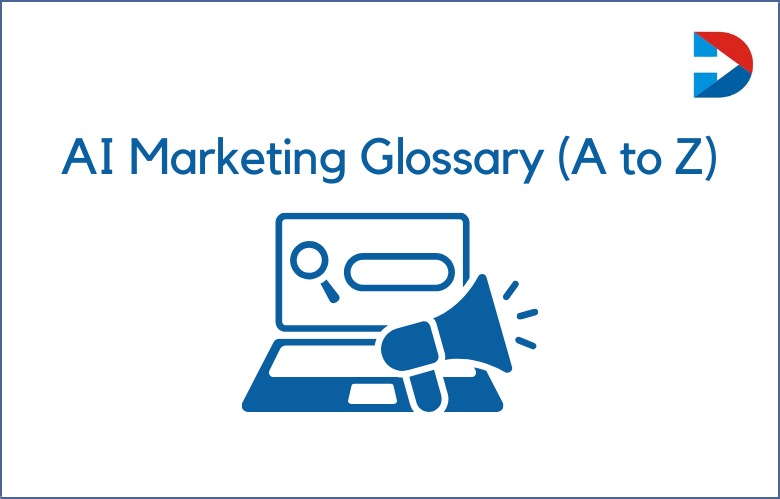
AMP of Accelerated Mobile Pages is the new format introduced by Google. AMP accelerates the mobile pages; the pages with rich text content load quickly. Beyond these successful essential stories, Google is taking it beyond. Google AMP Stories is a new format that the company has announced.
Stories are not a new format for those already using Instagram and Snapchat. This mobile-focused form helps publishers to create visually rich stories. Text, images, videos, and graphics can be combined. The users can see the AMP store search.
All they have to do is search for publishers’ names using a mobile browser. The publishers developing the feature are CNN, Hearst, Mashable, Meredith, Conde Nast, Vox Media, and The Washington Post. This format is going to bring more products to Google.
Accelerated Mobile Pages is an open-source Google project that started two years ago. Apart from other features, the new format introduced AMP stories, which allow users to share stories like news articles.
Snapchat first presented stories, and Facebook also introduced this popular format. Now is the turn of Google. This format is going to make the mobile browsing experience faster. AMP stories are used on any website and can be viewed on smartphones only. In the future, it will also expand to laptops and desktops.
How did AMP stories work?
The accelerated Mobile Pages feature works similarly to Snapchat Discover stories. Discover stories feature swipeable photos, text, graphics, and videos.
New ways will be beneficial to access news and entertainment.
Significant changes are expected in Google search results.
Pictures, videos, and graphics grab the readers’ attention quickly and keep them engaged for long.
The publishers who host AMP stories and HTML pages on the website link them to any other part of the site and drive traffic.
Creating and distributing content is going to become painless for publishers.
AMP stories is a new and free template that anyone can use. These are optimized for mobile viewing.
These articles will fill the mobile screen and lead to images and video.
Tapping on the home screen allows users to read further and swipe to the following article.
Google Accelerated Mobile Pages Stories does not allow advertising to be incorporated.
However, Google is in the process of creating an implementation.
It is unclear whether the ads will be added until they say, experimenting done without traditional monetization.
Step-by-Step Guide to Crafting Engaging Google AMP Stories
Creating engaging Google AMP (Accelerated Mobile Pages) Stories is an innovative way to deliver content that is visually appealing and highly interactive. These stories allow you to convey information in a format that’s optimized for fast loading on mobile devices. Here’s a step-by-step guide on how to craft engaging Google AMP Stories:
1. Understand the AMP Story Format
- Begin by familiarizing yourself with the AMP story format. AMP stories are built using a combination of HTML, CSS, and a set of specialized AMP components designed specifically for building rich narratives that are visually engaging and tap into the full potential of mobile by using features like animations and tappable interactions.
2. Plan Your Story
- Like any good narrative, your AMP story should have a clear beginning, middle, and end. Plan out the structure of your story, including the main points you want to cover. Decide on the flow and how you want to guide your audience through the story.
3. Design Your Assets
- High-quality visual assets are key to creating compelling AMP stories. Prepare images, videos, and animations that are high resolution yet optimized for quick loading. Ensure that your assets are visually coherent and support the narrative of your story.
4. Set Up the AMP Environment
- Set up your coding environment for AMP. Make sure you have the AMP library included in your HTML. You’ll also need to use the
<amp-story>component, which acts as a container for your story.
5. Build Your Story with AMP Components
- Utilize various AMP components to build your story. For example:
<amp-story-page>: This acts as a container for each page of your story.<amp-story-grid-layer>: Use this to define the layout in terms of layers.<amp-img>,<amp-video>: For embedding images and videos.<amp-animation>: To add animations that make your story interactive and lively.
6. Optimize User Experience
- Pay attention to the user experience. Ensure that your story is easy to navigate and interact with on mobile devices. Test your story on different screen sizes and platforms to make sure it’s responsive and accessible.
7. Add Interactive Elements
- Make your story interactive by incorporating elements that users can tap or swipe. This could include quizzes, polls, or slide-in information panels that add depth to the story.
8. Test and Validate Your Story
- Before publishing, test your AMP story across different devices and browsers to ensure compatibility and performance. Also, validate your AMP HTML with the AMP validator to check for any errors in the code.
9. Publish and Monitor Your Story
- Once your story is ready and tested, publish it on your platform. Monitor the story’s performance through analytics to see how your audience interacts with it. Use these insights to refine future stories.
10. Promote Your Story
- Promote your AMP story through social media, email newsletters, and other marketing channels. Since AMP stories are designed to be shared and are Google-friendly, they can help you reach a larger audience effectively.
Crafting an engaging AMP story is about combining the right technological tools with a compelling narrative and interactive elements. By following these steps, you can create stories that not only look great but also engage and inform your audience in a dynamic, mobile-friendly format.
From Concept to Clicks: Mastering the Art of Google AMP Story Creation
In today’s fast-paced digital world, captivating and engaging your audience quickly is more crucial than ever. Accelerated Mobile Pages (AMP) Stories offer a unique and visually rich way to tell stories that are optimized for mobile devices. This format, pioneered by Google, leverages the power of quick-loading visuals and narratives to capture and retain audience attention effectively.
“From Concept to Clicks: Mastering the Art of Google AMP Story Creation” is designed to guide you through every step of creating compelling AMP stories that not only look great but also perform excellently in search engines. Whether you’re a marketer, content creator, or digital storyteller, this guide will equip you with the necessary tools and insights to transform your ideas into impactful digital stories.
Starting with the basics of AMP technology, we’ll explore the key components of AMP Stories, including their structure, design elements, and the technical setup required. You’ll learn how to craft engaging narratives, use dynamic visuals, and optimize your stories for maximum visibility. By the end of this guide, you will have a thorough understanding of how to create AMP Stories that not only engage but also drive clicks and conversions, turning viewers into loyal followers.
Google AMP Stories: Revolutionizing Content Consumption for Mobile Users
Google AMP Stories: Revolutionizing Content Consumption for Mobile Users
In the realm of digital content, the way users interact with and consume media on mobile devices is continually evolving.
Google’s introduction of AMP (Accelerated Mobile Pages) Stories has marked a significant milestone in this evolution, revolutionizing how content is created, delivered, and experienced on mobile platforms.
AMP Stories provides a mobile-first approach to storytelling that combines the speed of AMP technology with the rich, immersive experience of a visual narrative.
AMP Stories harness the potential of mobile technology to offer full-screen experiences that are fast, engaging, and incredibly user-friendly. These stories are built using a framework of pre-designed templates and components that ensure they load instantly and look beautiful on mobile devices. The format allows publishers and content creators to tell stories that truly stand out, using a mix of video, audio, images, animation, and text.
The beauty of AMP Stories lies in their simplicity and accessibility. They are created using open web technologies, which means they can be shared and embedded across platforms and apps without being confined to a single ecosystem.
This open nature not only enhances visibility but also boosts SEO, making it easier for these stories to be discovered via search engines.
Creating Google AMP Stories
There is no plug-in support for any given content management system to create AMP Stories, and thus, to test this format, AMP Story pages have to be built manually along with an XML sitemap for Google.
AMP story, which is experimental and under development, can be used by publishers to provide visually rich information about content to the users. The tutorial is available at the official amp—dev site for creation them.
Those with basic knowledge of HTML, CSS, and JavaScript can create Google AMP stories. An AMP story contains individual pages composed of different layers with basic HTML and AMP elements—the story represented by amp-story, and the pages served by amp-story-pages and later by amp-story-grid-layer.
Amp-story is the container for all pages in the story and is responsible for creating a UI shell. The amp-story associated script to the AMP document must be added. The information on how to do this is available on the tutorials page on the amp. Dev.
- To create visual effects, AMP story pages are organized in layers.
- The first layer of the stacked layers is the first layer.
- The AMP HTML page’s markup is on the amp—dev site.
- It had to be copied and saved with a .html extension. Follow the steps to add images to the HTML page.
- The AMP page should be a valid AMP.
- After creating the page, preview the AMP page by opening it in the browser from the file system.
- To make sure that the AMP page is a valid AMP, open the page in the browser and add #development=1 to the URL.
- Check the validation errors by opening the Chrome Dev-Tools console.
- Existing HTML pages also can be converted into AMP HTML.
It is best to use text for some stories, and some are best expressed with images and videos. While browsing content on mobile devices, deep under-engagement is not possible; if there are images, videos, and graphics, they will get the reader’s attention and keep them engaged.
Production of stories becomes comfortable with AMP stories. The tutorial and documentation to create the Stories are available for all publishers. The content is presented as a full-screen portrait display on mobile phones.
Since ads are not currently supported, some publishers may not like to use them, but soon, ads will be supported, according to Google. Compared to Instagram or Snapchat stories, Google AMP Stories are content-developed professionals, unlike the user-generated content of other platforms.
AMP displays the pages faster on smartphones and is beneficial for low-data networks. The Tutorial and the Document released by Google for creating Google AMP Stories can be utilized by publishers to learn to make the Stories.
Conclusion:
Creating Google AMP Stories represents a powerful way to engage your audience with visually rich, mobile-optimized content that loads instantly. Throughout this guide, we’ve explored the steps necessary to design, build, and publish AMP Stories effectively, ensuring they are both compelling and technically sound. By following these guidelines, you can harness the full potential of this dynamic format to tell your stories in a way that captivates and resonates with your audience.
As you embark on your journey with AMP Stories, remember that the key to success lies in creativity and innovation. Experiment with different layouts, visuals, and narrative techniques to discover what best suits your content and appeals to your audience. Always prioritize the user experience, making sure your stories are accessible and enjoyable on any device.
Please email us at info@dotndot.com or call us at +919848321284.



